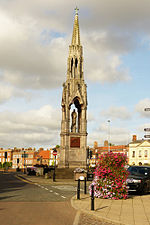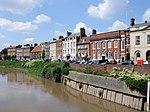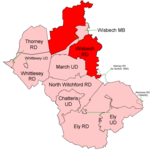Queens Road Cricket Ground
1851 establishments in EnglandCricket grounds in CambridgeshireDefunct cricket grounds in EnglandDefunct sports venues in CambridgeshireFenland District ... and 2 more
Sports venues completed in 1851Use British English from February 2015
Queens Road Cricket Ground was a cricket ground in Wisbech, Cambridgeshire. The first recorded match on the ground was in 1851, when Wisbech played an All-England Eleven.The ground held a single first-class match when Cambridgeshire played Yorkshire in 1867.The site of the ground today would be along Queens Road, which still exists within Wisbech today. Its likely location would be at the northern end of Queens Road.
Excerpt from the Wikipedia article Queens Road Cricket Ground (License: CC BY-SA 3.0, Authors).Queens Road Cricket Ground
Somers Road, Fenland District
Geographical coordinates (GPS) Address Nearby Places Show on map
Geographical coordinates (GPS)
| Latitude | Longitude |
|---|---|
| N 52.6635 ° | E 0.1572 ° |
Address
Somers Road Car Park
Somers Road
PE13 1JF Fenland District
England, United Kingdom
Open on Google Maps










